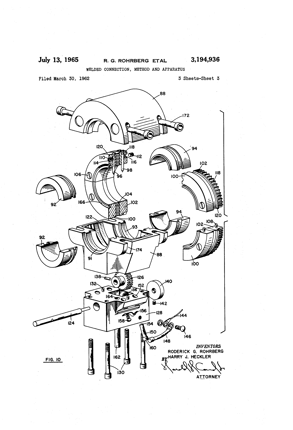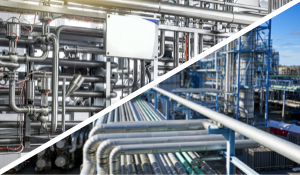How It All Began
The history of orbital welding begins in the 1950s when the aerospace industry was seeking a better way to reduce fuel loss of supersonic jets. In an effort to improve the structural integrity of their fuel tanks, engineers began experimenting with a new welding technique. As research and development continued, orbital welding emerged as a consistent, reliable, and efficient alternative to traditional welding methods.
In its simplest form, orbital welding is an automated process that requires minimal operator interaction. This method uses a tungsten that is mounted on a rotor to make circumferential welds. Instead of manual torches and filler rods, orbital welding uses tungsten inert gas (TIG) and electron beam welding to create the weld. The rotor then orbits around a pipe or tube, creating a strong, continuous weld. By using this method, welders were able to reduce the amount of fuel loss associated with supersonic jets while maintaining accuracy and strength.
amount of fuel loss associated with supersonic jets while maintaining accuracy and strength.
Orbital welding is also used to join pipes and tubing made of titanium, stainless steel, aluminum, copper and nickel alloys, Hastelloy®, Inconel®, Monel® and more. The process is particularly useful when welding thin-walled material, as it produces higher quality welds with reduced distortion. This is especially important in aerospace engineering, where even minor imperfections can affect the performance of a machine.
With recent advancements in material sciences and automation orbital is now used to weld components for a wide range of aircraft and spacecraft components, from engine parts and fuel systems to wing structures and fuselage components. With its ability to produce high quality welds with minimal distortion, orbital welding is the perfect solution for aerospace engineering applications that require precise, repeatable welds.
Since its inception, orbital welding has become an integral part of aerospace engineering and has been adopted by many other industries as well. It has revolutionized the way welders can perform their tasks and has drastically reduced labor costs for companies around the world. Today, orbital welding is used for both industrial and commercial purposes, from manufacturing cars to producing food and beverages. With its versatility and reliability, it’s no wonder why orbital welding continues to be a popular choice for many engineering projects.
Modern Applications
The modern applications for orbital welding are vast and span many industries. Here are some of the most popular industries that use the orbital welding method:
Energy Facilities — The use of orbital welding in gas, oil, hydroelectric and nuclear piping industries requires highly reliable welds to ensure safety and public health. Orbital welding removes operator variation and fuses leak-free weld joints. This consistency is important as any leak can be hazardous.
Food and Beverage — Orbital welding is particularly useful in the food and beverage industry. The pipes and tubes used in this industry must be accurately welded to ensure production and cleaning operations run smoothly. Sanitation and cleanliness are vital to food and beverage production, so any cracks or leaks from hand welds could cause serious problems especially during deep cleans or shut downs.
Pharmaceutical — Within the pharmaceutical industry, product running through pipes must be free of harmful bacteria and pathogens. Orbital welding guarantees consistent results for full-penetration welds, minimizing the chances rust or bacteria enter the supply.
Food and Beverage — Orbital welding is particularly useful in the food and beverage industry. The pipes and tubes used in this industry
must be accurately welded to ensure production and cleaning operations run smoothly. Sanitation and cleanliness are vital to food and beverage production, so any cracks or leaks from hand welds could cause serious problems especially during deep cleans or shut downs.
welded to ensure production and cleaning operations run smoothly. Sanitation and cleanliness are vital to food and beverage production, so any cracks or leaks from hand welds could cause serious problems especially during deep cleans or shut downs.
Pharmaceutical — Within the pharmaceutical industry, product running through pipes must be free of harmful bacteria and pathogens. Orbital welding guarantees consistent results for full-penetration welds, minimizing the chances rust or bacteria enter the supply.
Offshore Applications — For offshore applications, orbital welding is essential to produce leak-free underwater piping. The hydraulic joints produced by this method are corrosion-resistant and have superior strength, making them perfect for long-term usage.
Offshore Applications — For offshore applications, orbital welding is essential to produce leak-free underwater piping. The hydraulic joints produced by this method are corrosion-resistant and have superior strength, making them perfect for long-term usage.
Jan 30, 2023 9:07:22 AM
.png)
Comments